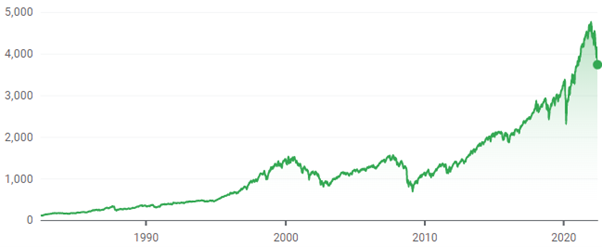Investing is an important part of being a senior executive. You may earn a healthy salary from what you do, but prudently and wisely investing a portion of your income is vital in making sure it can sustain the lifestyle you want to lead.
However, there are a few roadblocks in the way that can prevent you from doing this. You might feel that you simply don’t have the time in your busy schedule to sit down and carefully put your money in the market.
Or it’s equally possible that you feel you don’t have the knowledge to successfully design a portfolio that works for you.
No matter your circumstances, investing can be an accessible method for giving your money a boost – you just may need a helping hand in making a start.
So, here are five simple steps you can take as a senior executive to make your investments as effective for you as possible.
1. Define your investment goals
Every journey starts with a single step, but there’s no point in leaving until you know where you’re headed. That’s why effective investing begins with defining your investment goals.
Your investment goals are simply your wider ambitions and targets. So, ask yourself: what do you want to achieve with your money?
It can be useful to divide these goals into categories of short, medium, and long term:
– Short-term goals will be those with a time frame of two years or less, such as buying a certain car or going on holiday.
– Medium-term goals will typically be longer than five years but not more than 10 and might include renovating your home, or perhaps moving to a certain town or country.
– Long-term goals are your targets for the future, such as what you want to do in retirement or how you want to use your wealth to support your children and grandchildren down the line.
These goals will be personal to you, and there’s no wrong answer. It’s simply a case of working out what matters to you.
2. Creating a carefully balanced investment strategy
Once you know what you want to achieve, you can start looking at specific investments that will drive you towards those goals.
There’s a huge range of asset classes out there, all of which can make investing feel somewhat overwhelming. Some common ones you might want to consider for your portfolio include:
– Global equity funds
– High-quality corporate & government bond funds
– Commercial property
No matter how you ultimately decide to invest, remember that diversification is key here. This means spreading your invested money across a range of asset classes, sectors, industries, and regions.
That way, you can partially mitigate risk. For example, if all your investments were held in UK property and the property market took a dip, you might see the value of all your investments fall.
Meanwhile, by putting your money in different kinds of assets, you can decrease the chance of your entire portfolio dipping at once.
3. Keep calm and carry on
Investing is a marathon, not a sprint. So, it’s vital to keep moving towards the finish line, no matter what’s happening around you.
This is true even in light of market volatility. Events such as the financial crash in 2008, the Covid-19 pandemic, and even Russia’s invasion of Ukraine can have a marked impact on investment markets, temporarily wiping away value.
But the operative word here is temporarily; markets typically recover to continue growing despite such setbacks.
The graph below shows how the S&P 500, an index tracking the performance of 500 of the largest companies in the US, has reacted to such shocks since 1982:

Source: Google Finance
As you can see, even though the market has risen and fallen over time and companies will have failed during those rocky periods, the biggest companies in the US have always recovered to continue in an upward trajectory.
Past performance is not an indicator of future performance, and you can’t ever expect the market to behave as it has previously.
But historically, the key has been to stay invested and ride out dips and shocks with a diversified portfolio, rather than liquidating your investments and realising those losses.
4. Invest as tax-efficiently as possible
Knowing what to invest in is no doubt important, but just as key is knowing where to hold those assets. Crucially, doing so tax-efficiently can mean you’re the biggest beneficiary of gains in your portfolio’s value.
That’s why it can be sensible to make the most of tax allowances and exemptions. For example, you may want to consider using your ISA allowance each tax year, standing at £20,000 in 2022/23.
Assets held in a Stocks and Shares ISA are entirely free from Income Tax, Capital Gains Tax (CGT), and Dividend Tax. So, you can be confident that your money is invested tax-efficiently.
Meanwhile, you also have a CGT exempt amount before tax is due, standing at £12,300 in 2022/23. So, you could choose to liquidate non-ISA assets and realise gains up to this amount each tax year, allowing you to take them without incurring a tax charge.
Alternatively, you could choose to invest through a self-invested personal pension (SIPP). Pensions are famously tax-efficient, allowing your money to grow free from Income Tax, CGT, and Dividend Tax.
Additionally, you’ll also benefit from tax relief on your contributions up to the pension Annual Allowance – currently the lower of £40,000 or 100% of your earnings in the 2022/23 tax year.
That means you’ll see an instant return on your retirement savings, allowing you to tax-efficiently invest for your future.
5. Work with an expert
Above all else, perhaps the best course of action when dealing with investments is to work with a professional, especially if you’re a busy senior executive with other important matters on your plate.
If you’d like to find out how working with a financial planner can help you, please do get in touch with us at Cordiner Wealth.
We can design a diversified, tax-efficient portfolio for you that has your goals for the future in mind.
Email hello@cordinerwealth.co.uk or call 0113 262 1242 to find out how we could help you.
Please note
A pension is a long-term investment. The fund value may fluctuate and can go down, which would have an impact on the level of pension benefits available. Your pension income could also be affected by the interest rates at the time you take your benefits.
The value of your investment can go down as well as up and you may not get back the full amount you invested. Past performance is not a reliable indicator of future performance.







